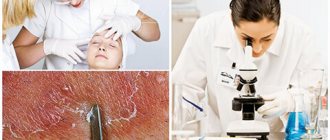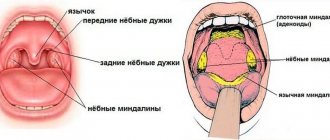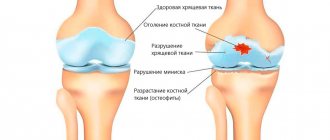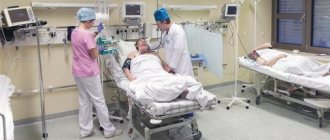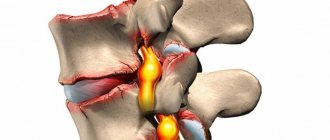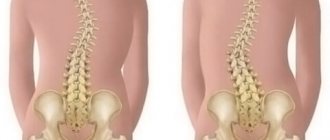What is demodicosis: symptoms, diagnosis and treatment
Is your skin flaking and red, rashes appearing, or is itching bothering you? We go to a dermatologist for a diagnosis. With Vladislav Leonidovich Sheinkman, Candidate of Medical Sciences, dermatovenerologist at the Expert Tula Clinic, we are learning how to protect ourselves from demodicosis.
— Vladislav Leonidovich, what is demodicosis and what are the symptoms of this disease?
Demodectic mange is an infection of smooth skin and hair by microscopic mites of the genus Demodex. The mite lives in the sebaceous glands and hair follicles.
To date, 65 varieties of Demodex mites are known, 3 of which are relevant to humans, and the rest parasitize animals.
The mite is most often found on the skin of the face: nose, forehead, chin, as well as the eyelashes and eyebrows.
Clinical signs of demodicosis include redness of the skin, the appearance of nodules and pustules on it, itching, and increased secretion of sebum. If eyelashes or eyebrows are affected, the eyelids may become inflamed. A secondary bacterial infection and scar formation on the skin may occur.
— Is demodicosis the same as rosacea (rosacea) or are they different diagnoses?
Several decades ago, the mite Demodex folliculorum was believed to be the cause of rosacea.
It is currently known that this mite occurs in 90% of people, even with completely healthy skin. Therefore, according to modern ideas, it is believed that the mite can aggravate the course of rosacea.
If I detect signs of rosacea in a patient, that is the diagnosis I make. Even if a subsequent laboratory analysis reveals a mite, I will not make a diagnosis of demodicosis: according to the latest scientific data, its use is not entirely justified. Therefore, it makes no sense to look for differences between demodicosis and rosacea as two different diagnoses.
Sometimes it seems that many people have a kind of “demodecophobia.” The importance of this microorganism should not be exaggerated, if only because it is found in most people and often does not cause any symptoms.
— Demodicosis occurs only on the face or can it affect other parts of the body?
Classic localization is the face. Theoretically, a tick can be detected on the body, but in practice such a diagnosis makes no sense.
— For what reasons does demodicosis occur? Is this an infectious disease?
As I said earlier, Demodex folliculorum is present in most people and is an opportunistic mite.
Demodicosis is reflected in the section of infectious and parasitic diseases of ICD-10, but its classification as an infectious disease due to the conditional pathogenicity of the pathogen is debatable.
Under certain conditions (in particular, when the immune system is weakened - for example, under stress; overheating), Demodex multiplies, causing the clinical manifestations listed above.
An allergist-immunologist at Clinic Expert Smolensk talks about the signs of decreased immunity.
Chemova Ulyana Vladimirovna
— How is demodex mite transmitted?
By contact.
— Not only people, but also animals suffer from demodicosis. Can a person become infected with demodicosis from cats and dogs?
I believe not, since these mites are species specific.
— Why is demodicosis dangerous for humans?
There is no danger as such either for the person himself or for others. The main problem is cosmetic. This, in turn, adversely affects a person’s self-esteem and psychological state.
— Which doctor should you contact if you suspect demodicosis?
See a dermatologist. If eye symptoms are noted, consult an ophthalmologist according to indications.
You can make an appointment with a dermatologist here
Please note: consultations are not available in all cities
— Vladislav Leonidovich, how is demodicosis diagnosed? What tests should be taken if you suspect this disease?
First of all, a microscopic examination of skin flakes from the lesion. Since the manifestations of demodicosis develop against the background of some general disadvantage, according to indications, a consultation with related specialists (gastroenterologist, endocrinologist, neurologist) may be prescribed with appropriate additional research methods (general blood test and testing for hormones, ultrasound of the abdominal organs, etc. .).
Why is an abdominal ultrasound prescribed? The ultrasound diagnostics doctor at the Expert Orenburg Clinic, Anna Viktorovna Poskrebysheva, tells
— How is demodicosis treated?
First of all, strictly follow the doctor’s recommendations. Overheating in any form should be avoided (bath, sauna, bath, working in the sun, in the kitchen without an exhaust hood), as well as hypothermia; limit the use of cosmetics; do not eat hot food.
Sometimes patients, self-medicating, prescribe ointments with hormones. This should absolutely not be done, as it can lead to aggravation of the process.
Medications that affect ticks are prescribed. If there are pustules, use drugs with an antibacterial effect. Cryomassage is used - rubbing with pieces of ice prepared from tea, chamomile or string infusion. Cool herbal lotions and “talkers” based on sulfur, camphor alcohol and boric acid are also used. Treatment of demodicosis can be lengthy.
— What is the prognosis for demodicosis?
It depends on following the doctor's recommendations.
— Is it possible to cure demodicosis using medicines for animals?
It is unacceptable. Medicines for animals have their own specifics, so it is impossible to predict how they will affect humans.
— It is known that the success of treatment always depends not only on the doctor, but also on the patient himself. What does a patient need to do in order to defeat demodicosis once and for all?
Strictly adhere to the treatment regimen developed by a dermatologist, and under no circumstances self-medicate. Eat a healthy and balanced diet, eliminate harmful factors that aggravate the course of demodicosis. Limit, or better yet completely eliminate, the consumption of alcohol, hot, spicy, sweet foods, and coffee.
You might be interested in:
Herpes: how to recognize and cure?
At an appointment with a nutritionist. Soup: is it good or bad?
Themis will not give offense. Who protects the rights of patients in private clinics?
For reference:
Sheinkman Vladislav Leonidovich
Graduate of the pediatric faculty of the Smolensk State Medical Institute in 1994.
From 1994 to 1995, he completed an internship, and from 1996 to 1998, a clinical residency in the specialty “Dermatovenereology”.
Has an academic degree of Candidate of Medical Sciences.
Currently working at Clinic Expert Tula LLC as a dermatovenerologist. Provides reception at the address: st. Boldina, 74
Medicines
Antiprotozoal drugs help well against demodicosis. They act on the nervous system of the tick, and it dies. The tablets must be used carefully; many have contraindications.
The doctor determines the treatment and the amount of drugs.
Medicines
To prevent tick reproduction, use the following means:
- "Metronidazole" - antimicrobial gel, course of treatment - up to three months;
- “Tetracycline” ointment, “Tobrex” eye drops, “Tsipromed” - antibacterial agents that help prevent infection, the course of treatment for demodicosis is up to two weeks;
- eye drops “Vitabakt”, “Okomistin” - antiseptics that help prevent the appearance of other infections, the course of treatment is from one to two weeks;
- drops “Opatonol”, “Lecrolin” - antihistamines that help get rid of allergic symptoms, course - one week;
- drops "Indocollir", "Diclo-f" - non-steroidal drugs prescribed when non-infectious diseases are added to the infection;
- drops such as “Artificial tears” - used for dry eyes, the course of treatment is up to two months.
Treatment of blepharitis of the eyelids should be carried out simultaneously with treatment of the face. So, to remove waste products of parasites, washing your face with antibacterial soap should be supplemented with a massage. To prevent re-infection, it is recommended:
- use disposable wipes to remove dirt from the face and eyelids;
- iron pillowcases and towels daily;
- regularly clean glasses, razors and other items in contact with the face from contamination;
- exclude cosmetics and get rid of products that have come into contact with parasites.
For a complete recovery, close contact with other people should be avoided.
Description of the disease
Demodectic blepharitis is a chronic disease that occurs with periods of exacerbations and remissions. When the edges of the eyelids become inflamed (blepharitis), favorable conditions are created for the life and reproduction of mites of the genus Demodex, which in turn aggravates the clinical course of the disease.
In 1841, the first mentions of a parasite with an interesting name - Demodex - appeared in the literature. Scientists have found it on the skin in acne, as well as in earwax. It was then that the name Demodex was coined (from the Greek Demo - lard, Dex - worm). Only two subtypes have been found on human skin: Demodex folliculorum and Demodexbrevis.
According to modern domestic researchers in the Russian Federation, parasite carriage (i.e. the presence of this mite in the skin) is observed in 100% of cases in patients over 60 years of age and in 50% of younger people.
Prevention
To prevent the appearance of demodicosis, women need to follow the following rules:
- Maintain facial hygiene;
- Maintain a healthy lifestyle;
- Use only proven cosmetics;
- Support immunity with vitamins;
- Get rid of bad habits.
These rules will help maintain healthy skin. To better understand what this disease looks like, look at the photo of demodicosis.
Demodicosis is a complex disease and can become chronic if it is not treated promptly. Also, do not forget that for proper treatment you need to contact specialists.
Complications of the disease
Treatment of demodicosis on the face should be carried out exclusively with the assistance of a doctor. Self-medication or ignoring this problem may not only not bring the desired result, but also worsen the course of the pathology. Skin scratching and regular trauma to the skin (due to severe itching and the patient’s desire to remove the rash mechanically) lead to disruption of the barrier function. As a result, the risk of developing a pustular infection significantly increases, which can be diffuse and affect large areas of the body.
In addition, this disease (especially demodicosis on the face in women) leads to psychological problems. As a result of the appearance of visible defects, the patient becomes withdrawn, begins to feel embarrassed about his appearance and stops leading a full-fledged lifestyle (closes himself off from the outside world, stops communicating with people, prefers to be alone). As this problem worsens, the developed complexes can develop into psychoses, neuroses and prolonged depression.
A large number of people with this diagnosis have concomitant pathologies (gastrointestinal tract, endocrine glands, etc.) and chronic infectious foci. Demodicosis damage to the body contributes to the aggravation of these conditions and, accordingly, deterioration of well-being.
How to get rid of demodicosis of the eyelids in humans
If the patient has skin rashes combined with severe itching and redness, you should contact specialized specialists:
- If the parasite is localized on the eyelids and the eyelash bulbs are damaged, an ophthalmologist is involved in the restoration.
- For foci of inflammation on the scalp - a trichologist.
- If the skin is affected, you should consult a dermatologist.
Treatment for demodicosis usually takes place without any problems, but recovery can take up to 6 months. The beginning of therapy consists of stopping the infection channel and normalizing the protective functions of the epidermis.
Recovery must be comprehensive. To do this, the doctor collects a detailed medical history. Based on the information received, he prescribes the appropriate treatment option. Usually it consists of:
- taking immunomodulators, vitamin complexes;
- prescribing medications to restore the functioning of the gastrointestinal tract;
- use of broad-spectrum anthelmintic drugs;
- prescribing antihistamines to reduce irritation;
- constant treatment of problem areas with medicinal compounds and ointments.
Ointments and gels prescribed by doctors reduce the number of adult individuals and prevent their subsequent reproduction, eliminating the increase in localization areas. Demodex-complex , consisting of soap, cream, and tonic, are prescribed as an addition to treatment
To increase the effectiveness of combating and preventing the disease, you can use Demazol medicinal shampoo. The plant components included in the composition - tansy, chamomile, verbena, string, birch tar - are effective for dermatitis of various etiologies. They contribute to the death of eye mites, parasite larvae and eggs. The product is protected by Russian patents: No. 2611347, No. 2611346, No. 2192860. RF patents in the name of I.B. Medvedev
Nutrition rules
If you cleanse the body of toxins and reduce the load on the gastrointestinal tract, it will be easier to fight the disease, so experts recommend sticking to a dairy-vegetable diet
It is also necessary to avoid citrus fruits, eggs and honey during the treatment period. It is also better to exclude sweets and baked goods. As for drinks, you should avoid coffee and soda.
Important points when contacting a dermatologist if you have a hair disease.How to care for braces
- ADVANTAGES OF TREATMENT ABROAD
During treatment, the most basic diet is various cereals, vegetables and dairy products. You can eat lean meat in small quantities.
Tear substitutes
With demodicosis, the secretory function of the meibomian glands is disrupted, the lipid layer in the tear film decreases, which leads to increased evaporation. The sensitivity of the cornea decreases, and trophic disorders are noted in its surface layers. Dry eye syndrome develops. Treatment in this case consists of replenishing artificial tears with drugs. Preparations for the treatment of dry eye syndrome are liquid and thick. Their main active ingredients are Carbomer, Sodium hyaluronate and Povidone. There is a drug with a complex composition.
Rice. 35 and 36. Drops are instilled into the eyes only as prescribed by an ophthalmologist. In this case, it is necessary to pull back the lower eyelid and drip 2 drops into the conjunctival sac.
